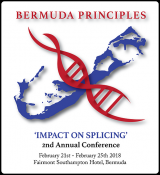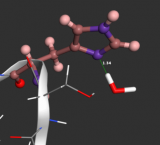
5/03/2018
eTRANSAFE 2nd Consortium Meeting in Basel
The 2nd eTRANSAFE Consortium Meeting was held in Basel (Switzerland) on the 6th and 7th of February 2018, where members of the 26 partners of the Consortium met to share research outcomes from the first 6 months of the project life, as well as to discuss on project specific topics such as Data collection, interoperability and integration. In addition to presentations from the 10 Work Packages, parallel sessions were organised to emphasise efforts on Modelling and Data Sources.
eTRANSAFE is expected to build upon the success of eTOX, for this the use of eTOX assets such as eTOXsys and OntoBrowser was addressed during the meeting. The need to develop an adequate sustainability plan from the very beginning of the project, and the importance of promoting and disseminating the information and the knowledge generated were also discussed, as the creation of a task force aimed at addressing the collection of data (both preclinical and clinical) by the EFPIA companies from a common perspective.

19/02/2018
The 2nd annual conference Bermuda Principles - Impact on Splicing is coming
The 2nd annual conference Bermuda Principles - Impact on Splicing (BPIS) will be held on February 21 - 25th, 2018. Eduardo Eyras, head of the Computational RNA Biology group of GRIB (UPF-IMIM) takes part in the organization of this event.
The inaugural BPIS Conference that took place in February 2017 was a great success, consolidating it as annual event on the scientific calendar. In 2018 this exciting conference will feature a distinguished Keynote Lecture by Professor Adrian Krainer, presentations by six keynote speakers representing a wealth of countries including Italy, Scotland, England and the USA, and a further array of speakers from the USA, Switzerland, South Africa and Australia. The conference topics include: Splicing mechanisms; RNA structure; RNA - protein interactions; Bioinformatics; Splicing and disease; Links to transcription; Therapeutics and translational applications.
For further information about the conference please visit the website htps://www.bermudaprinciples.org/

09/02/2018
Project eTOX close out meeting held in Brussels
On January 25th, the eTOX Executive Committee members François Pognan (Novartis Pharma), Ferran Sanz (FIMIM), Thomas Steger-Hartmann (BHC) and Carlos Díaz (SYNAPSE) held the close out meeting of the eTOX project at the IMI´s offices in Brussels. IMI´s Executive Director Dr Pierre Meulien also attended the meeting. The main points addressed during the meeting were project's objectives and outcomes, impact, sustainability and lessons learned.
The eTOX project stems from the very first IMI Call (it started in 2010) and was the very first IMI project coordinated by FIMIM. The project successfully ended in December 2016. With a budget of over 18.5 million €, the project was undertaken by a consortium of 30 organisations led by Novartis, among which 13 EFPIA companies, 11 academic partners, and 6 SMEs. The eTOX project aimed to build a toxicology database and novel software tools to better predict in-vivo toxicology of new chemical entities in early stages of the drug development pipeline.
The eTOX project leaves behind as main assets: eTOXsys - a tool to facilitate the safety assessment of new drug candidates; OntoBrowser - a tool to support community-based ontology development; eTOXlab - a platform for the development and maintenance of the models. These tools are an important legacy that will be further used within eTRANSAFE, an IMI-2 project recently started, that is expected to build upon the success of eTOX.

Closing in on advanced prostate cancer
The incidence of prostate cancer is increasing worldwide. In the US and Europe, it is one of the most common tumours and among the main causes of death by cancer. In most cases, prostate cancer is cured by surgical removal of the tumour and/or by radiotherapy. However, 20% of patients will need treatment to remove tumour cells but this treatment ceases to be effective after two or three years and the cancer develops further. Once this stage of the disease has been reached, there is no cure. A team headed by Xavier Salvatella, ICREA researcher at the Institute for Research in Biomedicine (IRB), including the participation of Gianni de Fabritiis, ICREA researcher and head of the Computational Biophysics group of GRIB, has discovered a new avenue through which to attack prostrate cancer cells that have developed drug-resistance. Published in the journal Structure, part of the Cell group, the study opens up new therapeutic avenues against a disease that causes 75,000 deaths a year in Europe alone (source: European Science Hub, 2015).
Reference article: De Mol E, Szulc E, Di Sanza C, Martínez-Cristóbal P, Bertoncini CW, Fenwick RB, Frigolé-Vivas M, Masín M, Hunter I, Buzón V, Brun-Heath I, García J, De Fabritiis G, Estébanez-Perpiñá E, McEwan IJ, Nebreda ÁR, Salvatella X. Regulation of androgen receptor activity by transient interactions of its transactivation domain with general transcription regulators. Structure (2017) https://doi.org/10.1016/j.str.2017.11.007

04/12/2017
Genes identified that distinguish mammals from other animals
Researchers from GRIB (IMIM-UPF) have analysed the genome of 68 mammals, including our own species
What distinguishes Homo sapiens from other living beings? And the group of mammals? What makes them different? These are the questions that researchers from GRIB and UPF have been trying to answer. To do this, they analysed the already-sequenced genomes of 68 mammals and identified 6,000 families of genes that are only found in these animals. These are genes with no homologues outside mammals, in other words, they are not present in other hairless species. In humans, it is estimated that they represent 2.5% of the genes that code for proteins. The work was led by Dr. José Luis Villanueva-Cañas, a member of the Evolutionary Genomics group of GRIB and currently a researcher at the Evolutionary Biology Institute (UPF-CSIC), and Dr. Mar Albà, ICREA researcher and head of the Evolutionay Genomics group of GRIB. The study also involved Dr. David Andreu's group from the UPF's Department of Experimental and Health Sciences. It has been published in the journal Genome Biology and Evolution.
Reference article: Villanueva-Cañas JL, Ruiz-Orera J, Agea MI, Gallo M, Andreu D; Alba MM. New Genes and Functional Innovation in Mammals. Genome Biology and Evolution, 2017; 9, 1886-1900. DOI: 10.1093/gbe/evx136

14/12/2017
Thesis lecture of Gerard Martínez: Applications of molecular dynamics in drug discovery and technology transfer via a web-based platform
Next wednesday, 20th of December at 12h, Gerard Martínez from the Computational Biophysics group of GRIB will defense his thesis "Applications of molecular dynamics in drug discovery and technology transfer via a web-based platform" at the Ramón y Cajal room at the ground floor of the PRBB building. You are all invited to this event.

13/12/2017
Thesis lecture of Alba Gutiérrez-Sacristán: "A bioinformatics approach to the study of comorbidity. Insight into mental disorders"
Next friday 15th of December at 11h, Alba Gutiérrez-Sacristán from the Integrative Biomedical Informatics group of GRIB will defense her thesis "A bioinformatics approach to the study of comorbidity. Insight into mental disorders" at the Josep Marull room of the Universitat Pompeu Fabra. You are all invited to this event.

11/12/2017
Thesis lecture of Oriol López Massaguer: "Development of informatic tools for extracting biomedical data from open and proprietary data sources with predictive purposes"
Next thursday 14th of December at 11.30, Oriol López Massaguer from the PharmacoInformatics group of GRIB will defense his thesis: "Development of informatic tools for extracting biomedical data from open and proprietary data sources with predictive purposes" at the Classroom number 61.346-348, placed at the third floor of the Doctor Aiguader building (Dr. Aiguader 80, Barcelona). You are all invited to this event.

15/11/2017
How fast could dinosaurs move?
A new pedagogical and communicative tool for the youngest audience
How fast could dinosaurs move? How can we know the size of sauropods with the measurements of their femur? What methods are there to calculate the weight of dinosaurs? These are some of the doubts that can be solved with an app for mobile devices designed by the lecturer Antonio Monleón-Getino, from the Department of Genetics, Microbiology and Statistics of the University of Barcelona, in collaboration with Biel Stela from the PharmacoInformatics group of GRIB (IMIM-UPF).
This app will be a new pedagogical and communicative tool to help the youngest audience to discover some of the hidden secrets of the fossilized skeleton of one of the most known dinosaurs which created great inspiration in the field of cinema and contributed to create its legend: the Tyrannosaurus Rex.
This collaboration with the researchers Antoni Monleón-Getino and Biel Stela is part of the scientific advice promoted by the Institut Català de Paleontologia Miquel Crusafont for the exhibition "T. Rex. La Trix, el tiranosaure més ben conservat del món", in CosmoCaixa (Barcelona).

16/10/2017
Innovación abierta para mejorar la evaluación de la seguridad de los medicamentos
La prestigiosa revista científica Nature Reviews Drug Discovery acaba de publicar un comentario donde se muestran los excelentes resultados del proyecto eTOX que ha permitido un nuevo modelo de colaboración de las industrias farmacéuticas entre sí y también entre estas y el mundo académico, en el que se comparten datos y conocimientos con el fin de mejorar la evaluación toxicológica de los fármacos.
Más allá de los resultados obtenidos, que son extremadamente valiosos, el proyecto es un modelo de innovación abierta -Open Innovation- dónde diferentes actores públicos y privados se alían y colaboran activamente.
"Con el proyecto eTOX hemos empezado vislumbrar el potencial de estos datos para construir modelos predictivos capaces de predecir efectos in vivo. Sin embargo, hay que incorporar efectos toxicodinámicos y analizar hasta qué punto los datos experimentales y las predicciones son extrapolables al ser humano. Con esta finalidad acabamos de iniciar el nuevo proyecto eTRANSAFE" explica Ferran Sanz, coordinador del proyecto y Director del GRIB (IMIM - UPF).
Un valor añadido del proyecto eTOX es el desarrollo de tecnologías que facilitan la transferencia de resultados de investigación a las empresas y la generación de resultados sostenibles, que pueden continuar siendo utilizados más allá de la finalización del proyecto.
Artículo de referencia: "Legacy data sharing to improve drug safety assessment: the eTOX project" Ferran Sanz, François Pognan, Thomas Steger-Hartmann, Carlos Díaz and eTOX (including Manuel Pastor). Nature Reviews Drug Discovery, 2017.



